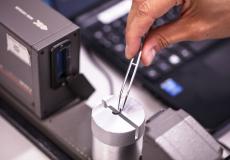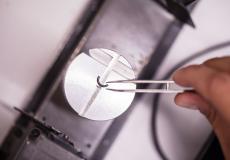Testing Methods
Elastomers are no ideally elastic materials. If, for example, a seal is deformed for a longer period, it will not return to its original shape after the removal of the deformation. If this deformation takes place in heat, this effect is especially obvious even if the upper temperature limit that is characteristic for the respective polymer has not been exceeded.
In the standardised CS-test an elastomer specimen, which is accurately defined in its measurements, is compressed to a specific pre-defined percentage (usually 25%) in an apparatus and is stored in a compressed state in a laboratory oven for a specific period (often 24h). After relaxation (removal of compression) the remaining deformation is measured and the compression set in % is calculated.
The pdf-document “Fachwissen Druckverformungsrestprüfung 06_2015” deals with the Compression Set Test (CS-Test) only at elevated temperatures and the discussion and assessment of results and their importance for practical applications.
In the pdf-document below “Normenvergleich DVR-Prüfung ISO 815 07_2013” a tabular comparison of the different test requirements of ISO 815 (as of July 2015) can be found.
Downloads
Expert knowledge on compression set test
Show PDF / download

